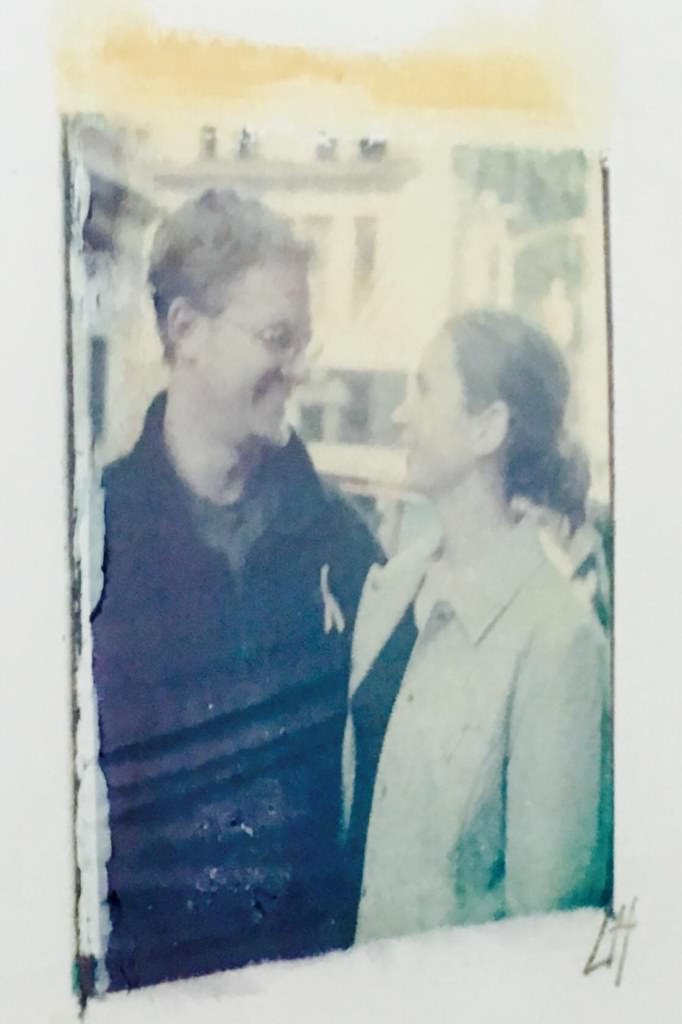On Slow Living
What does Slow Living mean to us?
Slow Living is a healthy and meaningful lifestyle
Mette is a Type A person. But since her MS diagnosis she has had to learn to fight the urge to do more. Thankfully, Andrew is Type B and has helped Mette slow down. Rather than doing a lot of things poorly they have decided to focus on a few things and do them really well. Without flash or fanfare, like the proverbial tortoise, they live their lives, run their practice and raise their family slow and steady, one day at a time, with a little time off now and then for sitting in the cafe.
It turns out there are lots of other people in the world trying to do the same thing and they call it the Slow Movement or Slow Living. Slow Living is a quiet resistance to the fast paced pressure of modern life, a cultural shift to slow down life’s pace and revive the sensual pleasures of daily life. By focusing on being present, doing less and enjoying more, we have been able to create a healthier and more meaningful life.

On Slowing Down
Andrew and Mette are partners in life and work.
Mette was introduced to architecture at a young age spending time in her father’s architecture office after school. Andrew found architecture on his own. As a freshman at MIT, he chose to live in a curvy brick dormitory because it just felt good to him to be there. That building it turned out had been designed by Alvar Aalto – the great Finnish architect and one of the giants of 20th century modern design.
By the time they met, Mette had travelled widely, lived and worked abroad and was fluent in three languages. Andrew’s international travels had consisted of a one way flight from Panama to Miami and he had managed to learn exactly one language.
Mette and Andrew’s paths first crossed at Harvard’s Graduate School of Design in 1998. It turns out they had many of the same down-to-earth values, based in part, on their shared Scandinavian heritage. Mette was born in Norway and her father is Norwegian and Andrew’s family has its roots in Finland and Sweden.
In school, they collaborated on many projects. Then suddenly, one week before Mette’s thesis review, she went blind in her right eye. She chalked it up to stress and Andrew helped her finish her final project. After graduation she was diagnosed with Multiple Sclerosis.
It was a terrible blow to both of them as they were just starting their careers in a profession notorious for its long hours. In order for Mette to be healthy they had to slow down and find balance without sacrificing the work they wanted to do. This has become one of their most important projects – designing their lives for long term health and happiness – and one they are passionate about sharing with others. While slow living wasn’t their first choice, it has been their best choice to create a healthy and meaningful life.
S
Space Not Form
Buildings, like bodies, have bones, skin and systems. Interior decoration is clothing; it is fashionable and mutable. The space inside is the soul. It is the intangible feeling that is difficult to describe and impossible to photograph. Space requires slowness to experience it, it is not readily consumed, but once it has been absorbed it is not easily forgotten.
L
Less But Better
Dieter Rams coined this approach in the late 20th century and it is all the more powerful today. By shifting the emphasis from quantity to quality we address problems of stress, overwhelm, over-consumption, waste and exploitation. For us it means designing fewer, timeless, high quality buildings that will endure more than 100 years.
O
Offer Empathy
Empathy is the ability to understand and share the feelings of others. It is putting yourself in someone else’s shoes rather than imposing your own views. We do this by resisting the urge to jump into design solutions before we have a chance to listen to you, observe your life and get familiar with the place you have chosen.
W
(W)holistic Thinking
Systems and their properties should be viewed as wholes, not just a collection of parts. The design of the whole is what differentiates Architecture from a building. It’s not just the walls and roof, but also the space, the feeling, the materials, the supply chain, the workers, and the environmental impact that we are designing.
What Do Others Say?
Aamodt and Plumb, based in Cambridge, Massachusetts, have created a handsome body of work that mixes tradition and modernity, clean lines with time-tested techniques and materials. The result is no-nonsense, comfortable, approachable, and accessible —much like the architects themselves. They strive for transparency and make a conscious effort to have a healthy live/work balance.




